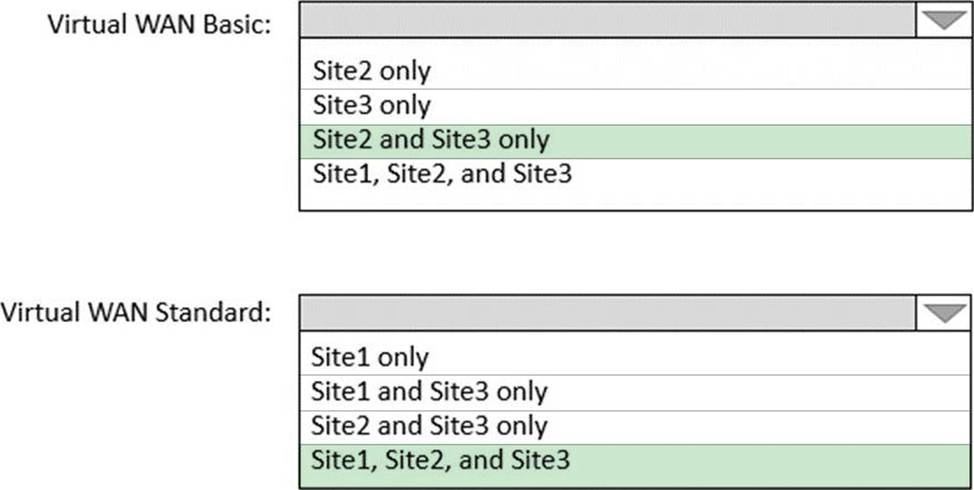Microsoft AZ-700 Designing and Implementing Microsoft Azure Networking Solutions Online Training
Microsoft AZ-700 Online Training
The questions for AZ-700 were last updated at Dec 18,2025.
- Exam Code: AZ-700
- Exam Name: Designing and Implementing Microsoft Azure Networking Solutions
- Certification Provider: Microsoft
- Latest update: Dec 18,2025
You have the Azure load balancer shown in the Load Balancer exhibit.
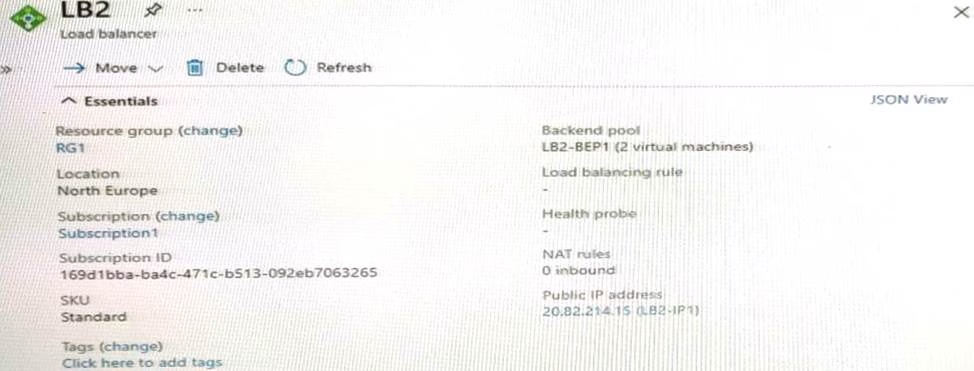
LB2 has the backend pools shown in the Backend Pools exhibit.
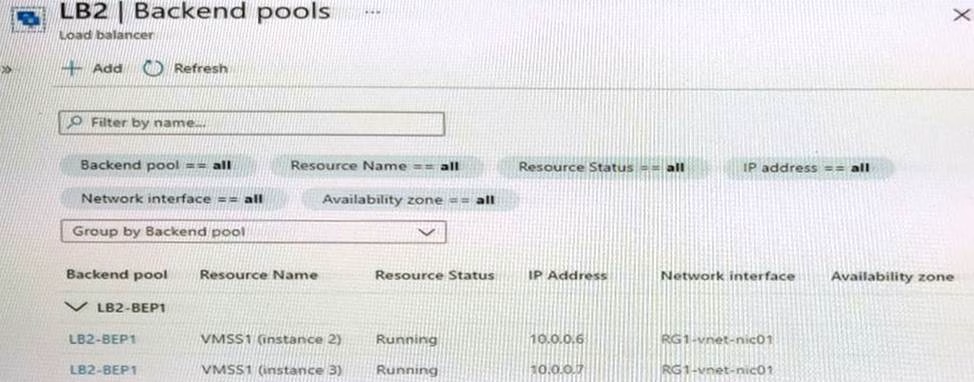
You need to ensure that LB2 distributes traffic to all the members of VMSS1.
Which two actions should you perform? Each correct answer presents part of the solution. NOTE: Each correct selection is worth one point.
- A . Add a network interface to VMSS1.
- B . Configure a health probe.
- C . Add a public IP address to each member of VMSS1.
- D . Add a load balancing rule.
You have the Azure Traffic Manager profiles shown in the following table.

You plan to add the endpoints shown in the following table.

Which endpoints can you add to Profile2?
- A . Endpoint1 and Endpoint4 only
- B . Endpoint1, Endpoint2, Endpoint3, and Endpoint4
- C . Endpoint1 only
- D . Endpoint2 and Endpoint3 only
- E . Endpoint3 only
You have two Azure App Service instances that host the web apps shown the following table.

You deploy an Azure application gateway that has one public frontend IP address and two backend pools.
You need to publish all the web apps to the application gateway. Requests must be routed based on the HTTP host headers.
What is the minimum number of listeners and routing rules you should configure? To answer, select the appropriate options in the answer area. NOTE: Each correct selection is worth one point.

You have 10 Azure App Service instances. Each instance hosts the same web app. Each instance is in a different Azure region.
You need to configure Azure Traffic Manager to direct users to the instance that has the lowest latency.
Which routing method should you use?
- A . geographic
- B . weighted
- C . performance
- D . priority
HOTSPOT
You configure a route table named RT1 that has the routes shown in the following table.

You have an Azure virtual network named Vnet1 that has the subnets shown in the following table.

You have the resources shown in the following table.

Vnet1 connects to an ExpressRoute circuit.
The on-premises router advertises the following routes:
* 0.0.0.0/0
* 10.0.0.0/16
For each of the following statements, select Yes if the statement is true. Otherwise, select No. NOTE: Each correct selection is worth one point.

DRAG DROP
You have an Azure Front Door instance named FrontDoor1.
You deploy two instances of an Azure web app to different Azure regions.
You plan to provide access to the web app through FrontDoor1 by using the name app1.contoso.com. You need to ensure that FrontDoor1 is the entry point for requests that use app1.contoso.com.
Which three actions should you perform in sequence? To answer, move the appropriate actions from the list of actions to the answer area and arrange them in the correct order.

HOTSPOT
You have the hybrid network shown in the Network Diagram exhibit.

You have a peering connection between Vnet1 and Vnet2 as shown in the Peering-Vnet1-Vnet2 exhibit.
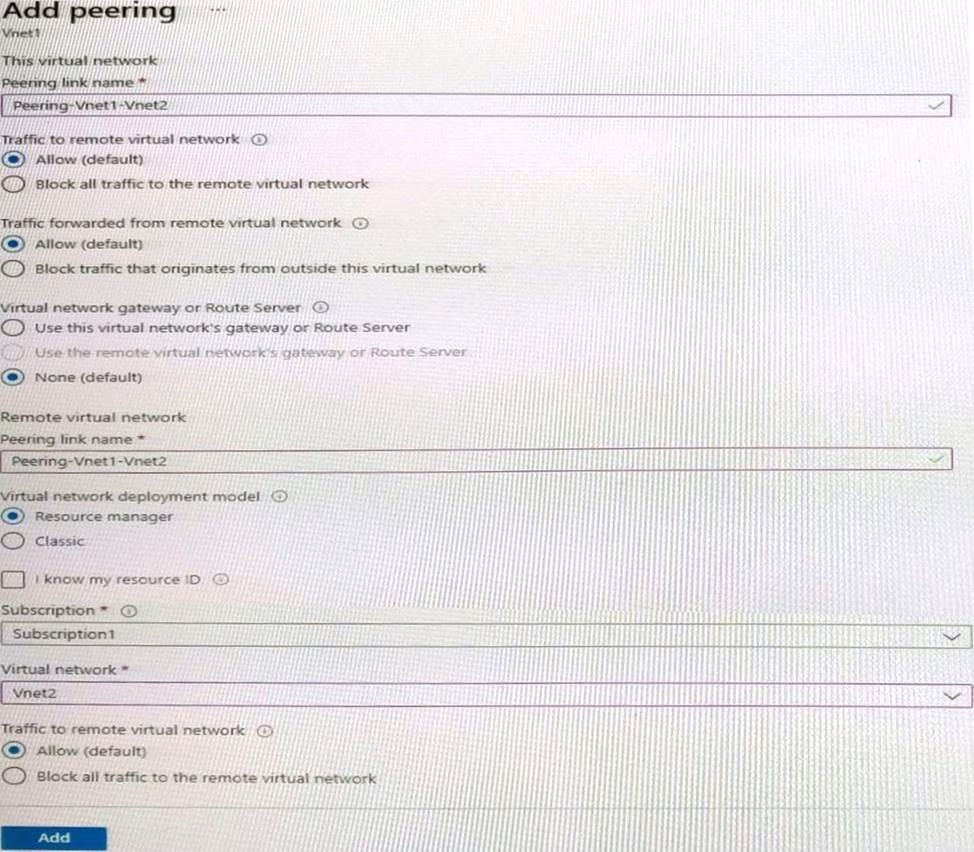
You have a peering connection between Vnet1 and Vnet3 as shown in the Peering -Vnet1-Vnet3 exhibit.
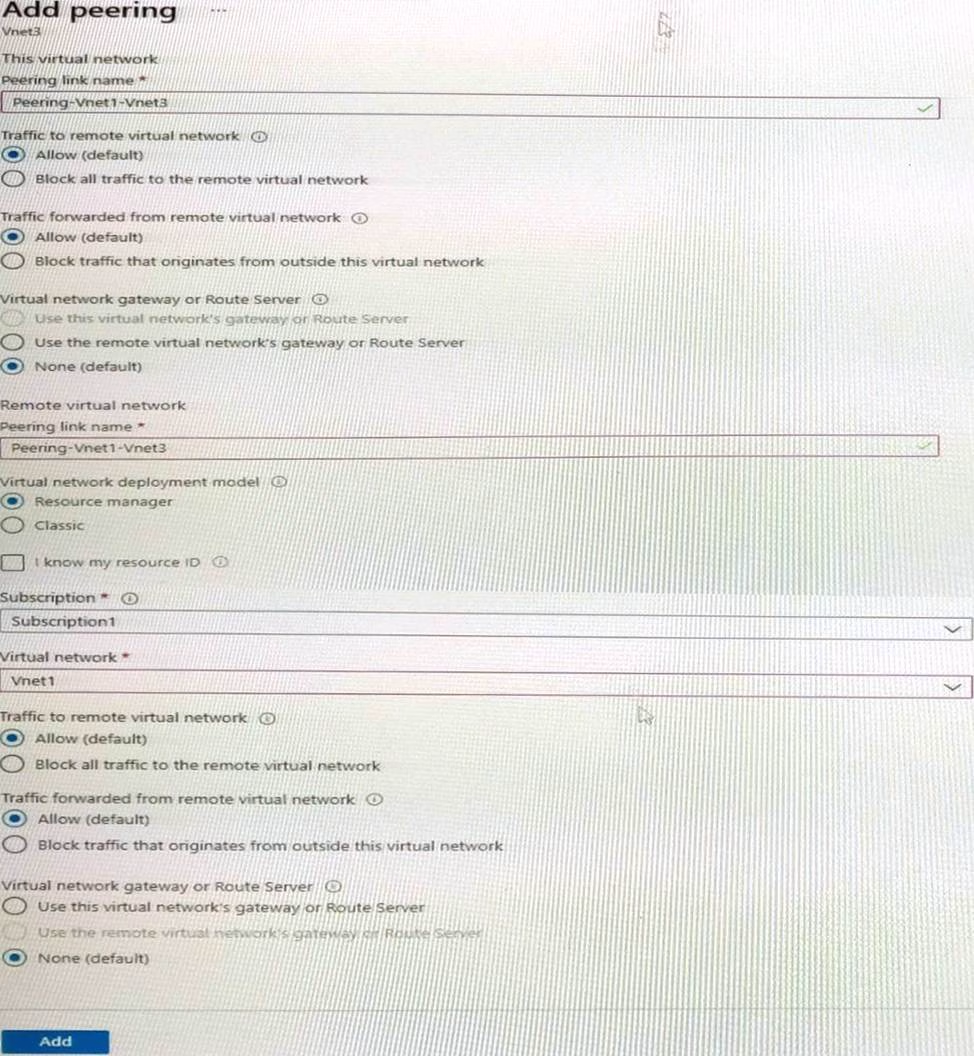
For each of the following statements, select Yes if the statement is true. Otherwise, select No. NOTE: Each correct selection is worth one point.

Your company has offices in and Amsterdam. The company has an Azure subscription. Both offices connect to Azure by using a Site-to-Site VPN connection.
The office in Amsterdam uses resources in the North Europe Azure region. The office in New York uses resources in the East US Azure region.
You need to implement ExpressRoute circuits to connect each office to the nearest Azure region. Once the ExpressRoute circuits are connected, the on-premises computers in the Amsterdam office must be able to connect to the on-premises servers in the New York office by using the ExpressRoute circuits.
Which ExpressRoute option should you use?
- A . ExpressRoute Local
- B . ExpressRoute FastPath
- C . ExpressRoute Direct
- D . ExpressRoute Global Reach
HOTSPOT
You have the Azure environment shown in the exhibit.
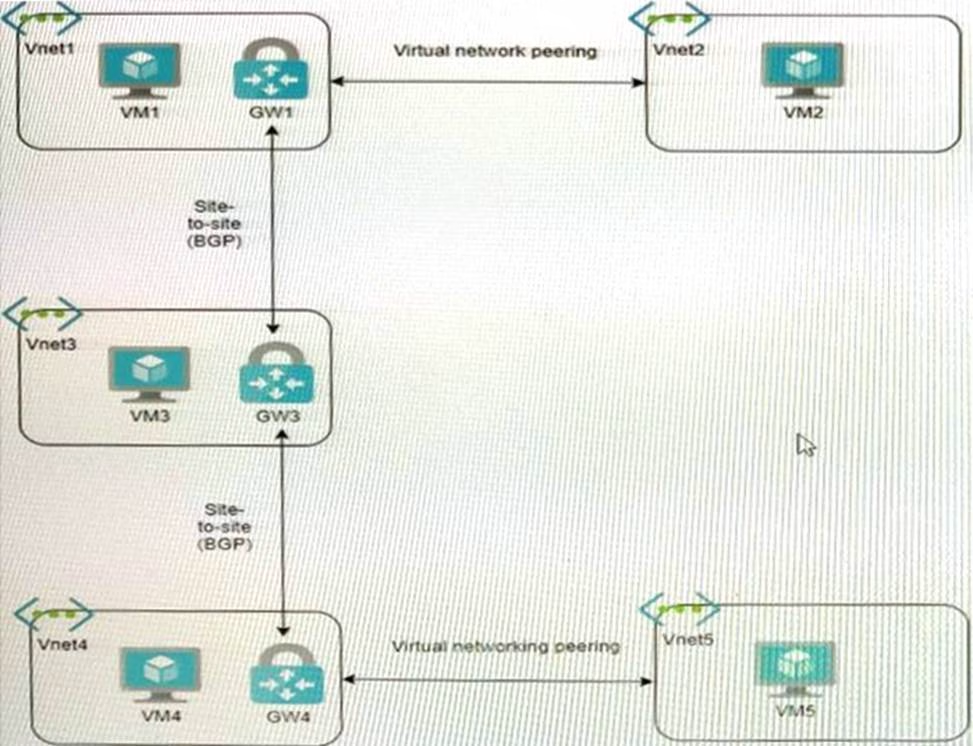
You have virtual network peering between Vnet1 and Vnet2. You have virtual network peering between Vnet4 and Vnet5.
The virtual network peering is configured as shown in the following table.

For each of the following statements, select Yes if the statement is true. Otherwise, select No. NOTE: Each correct selection is worth one point.

HOTSPOT
You have an Azure subscription.
You have the on-premises sites shown the following table.

You plan to deploy Azure Virtual WAN.
You are evaluating Virtual WAN Basic and Virtual WAN Standard.
Which type of Virtual WAN can you use for each site? To answer, select the appropriate options in the answer area. NOTE: Each correct selection is worth one point.
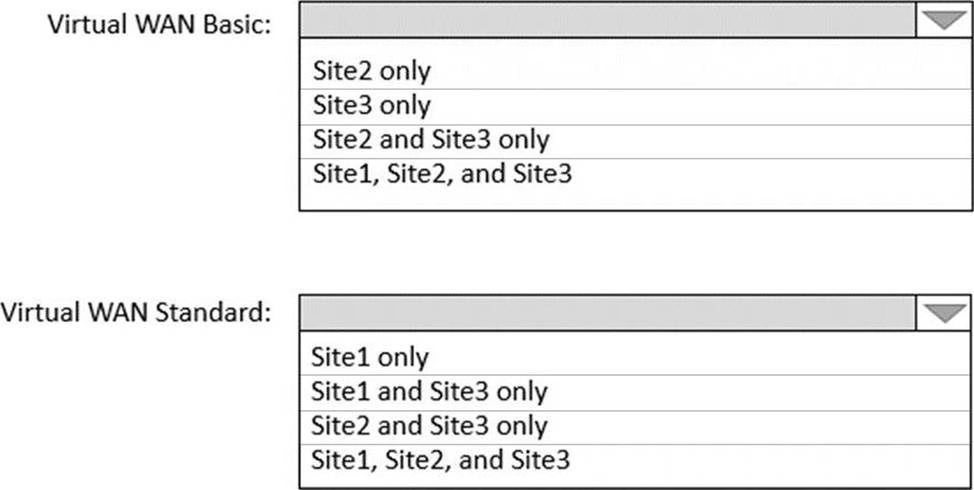
Latest AZ-700 Dumps Valid Version with 59 Q&As
Latest And Valid Q&A | Instant Download | Once Fail, Full Refund





